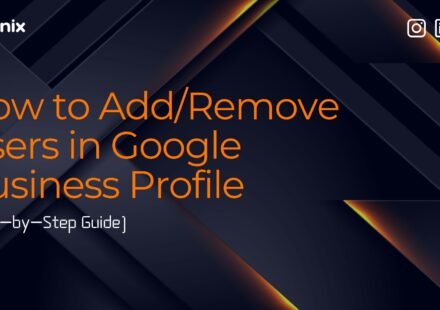Technical SEO vs Content SEO: Finding the Right Balance for Results

People often say, “You can’t win if you don’t play.”
A similar principle applies when it comes to getting your website noticed by search engines and real visitors.
If your website isn’t being indexed or crawled, it won’t show up in search results.
In simple terms, technical SEO helps search engines crawl your website and improves its rankings.
However, you also need to combine technical SEO with engaging content that attracts new visitors.
This blog looks at both types of SEO and how you can use them to boost your site’s performance.
Let’s get started.
Key Takeaways
- Technical SEO acts as the foundation. It allows your website to be indexed and crawled.
- Conducting a technical SEO audit supports better management and optimization efforts in ongoing activities.
- Descriptive and relevant keywords allow search engines to identify the content quickly.
- Backlinks effectively increase your search engine rankings and website authority.
Understanding Technical SEO
Backbone of digital performance
Technical SEO is a website infrastructure optimization strategy designed to optimize search result indexing, crawling, and rendering processes. It involves the auditing and optimization of mobile friendliness, site speed, XML sitemaps, secure connections, core web vitals, and structured data, etc. Simply put, technical SEO is the invisible layer that makes a website understandable to search engines.
Technical SEO is essential for large sites, where even minor issues can create major problems. For instance, an enterprise-grade website with thousands of pages often faces index bloat. It’s a problem that no content can fix without technical assistance.
The foundation of technical SEO starts with ensuring search engines can access your content. Key components include:
1. Website’s Architecture Optimization: Developing well-structured and hierarchical architectures that clarify content’s priority for search engines.
2. Robots.txt Configuration: This is a strategic setup that informs search engines which parts of your website to index or ignore.
3. Page Speed Optimization: This is critical for both search ranking and user experience, encompassing code minification, server-side improvements, and image compression.
4. Mobile-First Implementation: Ensure a seamless experience on all devices, mostly smartphones where most searching happens.
Understanding Content SEO
Essential for users and search engines
Content SEO refers to the creation and optimization of content on your website. It helps to inform and engage your target audience. The core objective of content SEO is to enhance your site ranking and drive more visitors. Key elements of Content SEO include:
1. Keyword Research:
Keyword research is the foundation of content SEO. It means finding the specific terms and phrases that your target audience often uses when searching for information regarding your services or products. Understanding how your users search for information provides insight into trending topics, user intent, or helps you simplify your content creation.
2. Quality Content:
Quality content is the backbone of content SEO. It’s not just about writing sentences or adding keywords; it’s about delivering true value to the audience. Good quality content should entertain, inform, and captivate the reader.
3. On-Page Optimization:
On-page optimization makes your content discoverable. This process involves placing keywords in meta titles, meta descriptions, headers, and body content, so that users and search engines can understand that they are in the correct place.
4. Internal Linking:
Internal linking is an effective yet underused aspect of Content SEO. It’s a practice by which you can link to other relevant pages on your website. Internal linking improves user experience, boosts SEO, and helps with navigation for your visitors.
Technical SEO vs. Content SEO
Here is a complete comparison table showing Technical SEO vs Content SEO:
| Aspect | Technical SEO | Content SEO |
| Primary Focus | Site speed, structure, indexing, and crawlability. | Quality and keyword optimization of on-page content. |
| Goal | Make the site accessible and easy for search engines to understand. | Provide relevant and valuable content that answers users’ queries. |
| Key Elements | Website speed optimization
Mobile responsiveness XML sitemaps Robots.txt HTTPS security Structured data (Schema) URL structure |
Keyword research
On-page optimization Content quality & relevance Internal linking Readability Image optimization |
| Tools Used | Google Search Console, Ahrefs Site Audit, Screaming Frog, GTmetrix, PageSpeed Insights | Google Keyword Planner, Ahrefs, SEMrush, SurferSEO, Clearscope |
| Measurement Metrics | Crawl errors, indexing status, page load time, Core Web Vitals scores, mobile usability | Keyword rankings, organic traffic, dwell time, bounce rate, CTR |
| Impact on SEO | Ensures search engines can find, understand, and index your site effectively. | Improves rankings by matching search intent and engaging users. |
Conclusion
Focusing either on technical or content SEO is like putting on a concert with half the band not there. For a concert to be impactful, the backstage act (technical SEO) must work in tandem with content SEO. When your site is structurally sound and has wrapping textured content, you can create the perfect stage for a digital marketing strategy that not only ranks well, and connects with people.
At Qtonix, we are the conductors in this symphony, intertwining technical proficiency with content SEO to provide perfect results that resonate with your audience. With our assistance, your brand will develop a very strong online presence, consisting of great visibility, continual engagement and measurable growth.
FAQs
No! Technical SEO will ensure that your website is set up to be crawled and indexed by search engines but, it will never tell you how to create engaging content, and keyword-rich content, optimized for the necessary keywords and for ranking in competitive search queries and attracting visitor engagement.
You should review your key content and refresh it every 6 to 12 months. Refresh accuracy in all stakes, provide new insights, refresh statistics, and optimize for trending keywords to maintain and improve your chances of success in rankings.
Technical SEO: Google Search Console, Ahrefs Site Audits, Screaming Frog, GTmetrix, PageSpeed Insights.
Content SEO: Ahrefs Keywords Explorer, SEMrush, Surfer SEO, Grammarly, Yoast SEO.
No, Google rewards a degree of balance. High-quality or engaging content will not rank well if it is hosted on a poorly designed site that is slow to load or is difficult to navigate, and a technically perfect website won’t rank without valuable content.
Written by Adam Gibbs
Adam is a skilled SEO content expert with a proven track record of crafting high-quality, keyword-rich content that drives traffic, engages readers, and ranks on search engines. With 10+ years of experience in digital marketing and content strategy, Adam specializes in creating blog posts, website copy, and marketing materials tailored to both audience needs and SEO best practices.
Related Posts
A Complete Guide to Adding and Managing Users in Google Analytics 4
How to Add a User to Google Ads: Standard vs. Admin Access Explained
- All Posts
- SEO

Table of Contents Book Intro Call Case Studies Share: Related Guides: Related Posts Step-by-Step Tutorial: How to Share Google Tag...

Table of Contents Book Intro Call Case Studies Share: Related Guides: Related Posts Step-by-Step Tutorial: How to Share Google Tag...

Table of Contents Book Intro Call Case Studies Share: Related Guides: Related Posts Step-by-Step Tutorial: How to Share Google Tag...

Table of Contents Book Intro Call Case Studies Share: Related Guides: Related Posts Step-by-Step Tutorial: How to Share Google Tag...





